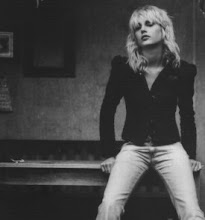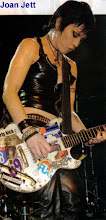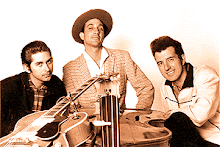She was most popular in the 1950s- before my time, actually. A concert she gave at the Hollywood Bowl that first year was the breakout performance which finally sparked sudden worldwide fame becoming internationally famous overnight. Only weeks later her first Capitol recording Voice of the Xtabay was released and took the recording industry by storm with a million copies sold before the year was over. (Moreover, it has never stopped selling!) This woman wowed audiences with her double-voiced trills and amazing vocal range, South American (regional) folk music and her stunningly flamboyant and authentic outfits which were often studded with gold and silver jewelry, many of which were copied from Incan Royal costumes. In fact, she claimed to be a descendant of the Incan emperor Atahualpa and was backed by her country on this issue. Her birth name was Zoila Augusta Emperatriz Chavarri del Castillo and the internet sources (such as Wikipedia) will give her birth date as September 10th but those sources are in error. Birthdates aside, that isn’t the only misinformation about her on the internet, even by her own admission or from her camp but one thing is for certain, she was called The Nightingale of the Andes and also as a Peruvian Songbird and she was very definitely that and more.
She traveled with
Vivanco throughout South America and
eventually the world. Inexplicably, the U.S. was much more resistant to her
talent in the beginning though both she and Vivanco worked very hard trying to
get noticed, not just with the public but also with booking agents who viewed
her, more or less, as a novelty act. An appearance on television shows did not
produce much interest either but singing at the Hollywood Bowl with Arthur
Fiedler’s orchestra got her the type of attention that went around the world
and back. After that she began a series of concert tours that moved through
several continents and to hundreds of thousands of people per concert. One
reporter, Glenn Gunn of the Washington Times-Herald reported, “There is no
voice like it in the world of music today…a greater range than any female voice
of concert or opera. It soars into the acoustic stratosphere or
plumbs sub-contralto depths with equal ease. Such a voice happens only once in
a generation.”
In 1962 Yma
returned to Los Angeles
in triumph but with her Capitol Records deal expired. The U.S. had cooled
a bit to her talent but as she remained in top form it didn’t stop her
international success. In 1963 she traveled to Tokyo and had a 10 week run at the Mikado
Room. In November of that same year she traveled to Germany to perform again and
connected with another celebrity fan in Marlene Dietrich! I must imagine that
Marlene was in awe of her voice and the exotic songs which were Vivanco’s work
on musical composition and the written lyrics which were solidly based on Incan
legends.
A couple of years
later she returned to the Hollywood Bowl for only the second time, fifteen
years later for a South American Fiesta Gala. It inspired her to make a return
to Peru
to give a few concerts and visit her family with a disappointing reception from
her fellow Peruvians. She had become an American citizen many years previous
and this act offended them enough to accuse her of trying to change Peruvian
music and the newspapers canned her modified style as inauthentic. Her divorce
from Vivanco may have also been a factor as well although she was perfectly
justified for doing so. In 1966 she was welcomed to Brazil for another festival
and was well received and well attended by singers, musicians and composers the
world over including Amalia Rodriguez, Les Baxter, Maurice Chevalier and, of
course, the general public.
Yma completely
ended all association with Vivanco in 1968 after they did a last stint at the
Mikado Room with a series of successful performances and she received the
Golden Disk of Hollywood Award for Best Latin American singer in America. With
the complete break-up, he moved to Spain
and she headed for Australia
and performed at Chequers in Sydney. Even though she
had some great moments in the seventies it was a cooling off period for her
most likely because of the music scene at that time. One such appearance was
again at the Hollywood Bowl for a 20th anniversary appearance which
included people like Frank Sinatra, Tony Martin, Ricardo Montalban and Dionne
Warwick. This was a turning point for her which helped her feel accepted and
comfortable in the music world. It added longevity to her career which has kept
her in the public eye for many years past her lifespan.
An attempt in
reigniting her career came in 1971 with a new album after a 12 year recording
lapse. Titled, Miracles it was
released by London Records and funded by three fans. The presence of Les Baxter
as the producer should have been a help but the packaging of it ignited Yma’s
anger instead. She didn’t agree with any of the credits Les Baxter received or
the way it was packaged. This also kindled a big fat lawsuit. The album was
withdrawn at some point but not before Yma’s cult following managed to snag
copies. It is now a favorite with vinyl record collectors. This set the tone for
the 70s when her mother took ill, prompting Yma to visit her several times,
even with the negative receptions she was getting in her native land. When her
mother, Emilia, passed away in 1974 it was over and she was not to return for
32 years!
After giving two
concerts in New York City in 1975, at the Town Hall and at Chateau Madrid she
faded out of the public eye out of a dire need for solitude and to deal with a
delinquent son, a dying fellow trio artist by the name of Cholita and other
weighty matters but did not return to Peru after her mother’s passing.
Throughout the 80s she did small stints within U.S. borders, gave out interviews
for quite a few publications here and abroad and was quietly building up a
following based on her recordings and some few attempts by others at imitation.
The cult following happened after a 1987 appearance on The David Letterman Show
and a play date at New York’s
Ballroom. An interesting documentary appeared in 1992 on German T.V. which
brought some interest in her but perhaps the wrong kind for the times.
Her ex-husband,
Vivanco passed away in 1998 without much publicity or attention but more
telling is that in 2006, two years before she left this world, Yma was
reordained into Peruvian hearts with a letter sent to the government by a young
fan who asked the authorities to finally recognize her as a national treasure
as they should have much earlier. They all agreed and sent for her to return to
receive many awards among which the Orden del Sol, only given to the most
prominent, was granted. During that time she also visited Machu Picchu wanting to take in the awesome
atmosphere in peace. Instead it became another photo extravaganza with much
publicity. Her parting words before she went back home to Los Angeles as the American she had become
were simply, “I miss my home.”
She passed
quietly on Halloween in 2008 at her home in Silverlake, east Hollywood digs,
after battling stage 4 colon cancer for eight months. I never saw any
announcements although it has been reported on the internet that it was made
known worldwide. My father, who was also in his 80s when she passed, brought me
a newspaper clipping because I’d been her fan since I was in my young twenties.
He said he remembered her and gave me the clipping. She had turned eighty-six
only a few months before.
I will close this
with a recommendation of one of the most touching songs of her repertoire
titled, Ripui, which means farewell.
The closing lines ring out, “When I go, my words will be your tears.”
The Castle Lady















































